From 1991
Made In The Image Of God
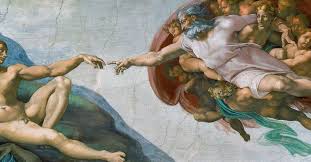
The Uniqueness of Creation Week
What Holds the Universe Together?
Creation Papers
Sexuality and Wholeness Papers
The Creation of Man
Text from Genesis
1:26 Then God said, ‘Let us make man in our image, according to our likeness; and let them have dominion over the fish of the sea, and over the birds of the air, and over the cattle, and over all the wild animals of the earth, and over every creeping thing that creeps upon the earth.’
27 So God created humankind in his image,
in the image of God he created them;
male and female he created them.
28 God blessed them, and God said to them, ‘Be fruitful and multiply, and fill the earth and subdue it; and have dominion over the fish of the sea and over the birds of the air and over every living thing that moves upon the earth.’ 29 God said, ‘See, I have given you every plant yielding seed that is upon the face of all the earth, and every tree with seed in its fruit; you shall have them for food. 30 And to every beast of the earth, and to every bird of the air, and to everything that creeps on the earth, everything that has the breath of life, I have given every green plant for food.’ And it was so. 31God saw everything that he had made, and indeed, it was very good. And there was evening and there was morning, the sixth day.
2:1 Thus the heavens and the earth were finished, and all their multitude. 2And on the seventh day God finished the work that he had done, and he rested on the seventh day from all the work that he had done. 3 So God blessed the seventh day and hallowed it, because on it God rested from all the work that he had done in creation.
4 These are the generations of the heavens and the earth when they were created.
In the day that the Lord God made the earth and the heavens, 5 when no plant of the field was yet in the earth and no herb of the field had yet sprung up—for the Lord God had not caused it to rain upon the earth, and there was no one to till the ground; 6 but a stream would rise from the earth, and water the whole face of the ground— 7 then the Lord God formed man from the dust of the ground, and breathed into his nostrils the breath of life; and the man became a living being. 8 And the Lord God planted a garden in Eden, in the east; and there he put the man whom he had formed. 9Out of the ground the Lord God made to grow every tree that is pleasant to the sight and good for food, the tree of life also in the midst of the garden, and the tree of the knowledge of good and evil.
10 A river flows out of Eden to water the garden, and from there it divides and becomes four branches. 11 The name of the first is Pishon; it is the one that flows around the whole land of Havilah, where there is gold; 12 and the gold of that land is good; bdellium and onyx stone are there.13 The name of the second river is Gihon; it is the one that flows around the whole land of Cush. 14 The name of the third river is Tigris, which flows east of Assyria. And the fourth river is the Euphrates.
15 The Lord God took the man and put him in the garden of Eden to till it and keep it. 16 And the Lord God commanded the man, ‘You may freely eat of every tree of the garden; 17 but of the tree of the knowledge of good and evil you shall not eat, for in the day that you eat of it you shall die.’
18 Then the Lord God said, ‘It is not good that the man should be alone; I will make him a helper as his partner.’ 19 So out of the ground the Lord God formed every animal of the field and every bird of the air, and brought them to the man to see what he would call them; and whatever the man called each living creature, that was its name. 20 The man gave names to all cattle, and to the birds of the air, and to every animal of the field; but for the man there was not found a helper as his partner. 21 So the Lord God caused a deep sleep to fall upon the man, and he slept; then he took one of his ribs and closed up its place with flesh. 22 And the rib that the Lord God had taken from the man he made into a woman and brought her to the man. 23 Then the man said,
‘This at last is bone of my bones
and flesh of my flesh;
this one shall be called Woman,
for out of Man this one was taken.’
24 Therefore a man leaves his father and his mother and clings to his wife, and they become one flesh. 25 And the man and his wife were both naked, and were not ashamed.
3:1 Now the serpent was more crafty than any other wild animal that the Lord God had made. He said to the woman, ‘Did God say, “You shall not eat from any tree in the garden”?’ 2 The woman said to the serpent, ‘We may eat of the fruit of the trees in the garden; 3 but God said, “You shall not eat of the fruit of the tree that is in the middle of the garden, nor shall you touch it, or you shall die.” ’ 4 But the serpent said to the woman, ‘You will not die; 5 for God knows that when you eat of it your eyes will be opened, and you will be like God, knowing good and evil.’ 6 So when the woman saw that the tree was good for food, and that it was a delight to the eyes, and that the tree was to be desired to make one wise, she took of its fruit and ate; and she also gave some to her husband, who was with her, and he ate. 7 Then the eyes of both were opened, and they knew that they were naked; and they sewed fig leaves together and made loincloths for themselves.
8 They heard the sound of the Lord God walking in the garden at the time of the evening breeze, and the man and his wife hid themselves from the presence of the Lord God among the trees of the garden. 9 But the Lord God called to the man, and said to him, ‘Where are you?’ 10 He said, ‘I heard the sound of you in the garden, and I was afraid, because I was naked; and I hid myself.’ 11 He said, ‘Who told you that you were naked? Have you eaten from the tree of which I commanded you not to eat?’12 The man said, ‘The woman whom you gave to be with me, she gave me fruit from the tree, and I ate.’ 13 Then the Lord God said to the woman, ‘What is this that you have done?’ The woman said, ‘The serpent tricked me, and I ate.’ 14 The Lord God said to the serpent,|
‘Because you have done this,
cursed are you among all animals
and among all wild creatures;
upon your belly you shall go,
and dust you shall eat
all the days of your life.
15 I will put enmity between you and the woman,
and between your offspring and hers;
he will strike your head,
and you will strike his heel.’
16 To the woman he said,
‘I will greatly increase your pangs in childbearing;
in pain you shall bring forth children,
yet your desire shall be for your husband,
and he shall rule over you.’
17 And to the man he said,
‘Because you have listened to the voice of your wife,
and have eaten of the tree
about which I commanded you,
“You shall not eat of it”,
cursed is the ground because of you;
in toil you shall eat of it all the days of your life;
18 thorns and thistles it shall bring forth for you;
and you shall eat the plants of the field.
19 By the sweat of your face
you shall eat bread
until you return to the ground,
for out of it you were taken;
you are dust,
and to dust you shall return.’
20 The man named his wife Eve, because she was the mother of all who live. 21And the Lord God made garments of skins for the man and for his wife, and clothed them.
22 Then the Lord God said, ‘See, the man has become like one of us, knowing good and evil; and now, he might reach out his hand and take also from the tree of life, and eat, and live for ever’— 23 therefore the Lord God sent him forth from the garden of Eden, to till the ground from which he was taken. 24 He drove out the man; and at the east of the garden of Eden he placed the cherubim, and a sword flaming and turning to guard the way to the tree of life. (Genesis 1:26-3:24) |

An investigation into the nature of man and human relationships
properly begins in Genesis, the Book of Beginnings. Indeed, the
God-given model for sexual identity, for marriage (the oldest
of all human institutions), and for the structure of society (under
God), stretches back to the very time of creation:
"Then God said, 'Let us make man in
our image, after our likeness; and let them have dominion over
the fish of the sea, and over the birds of the air, and over
the cattle, and over all the earth, and over every creeping thing
that creeps upon the earth.' So God created man in his own image,
in the image of God he created him; male and female he created
them...the LORD God caused a deep sleep to fall upon the man,
and while he slept took one of his ribs and closed up its place
with flesh; and the rib which the LORD God had taken from the
man he made into a woman and brought her to the man. Then the
man said, 'this at last is bone of my bones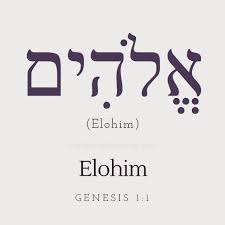 and flesh of my flesh;
she shall be called Woman, because she was taken out of Man.'"
( 1:26,27; 2:22-25)
and flesh of my flesh;
she shall be called Woman, because she was taken out of Man.'"
( 1:26,27; 2:22-25)
The name of God used in Genesis One is Elohim, a uniplural noun. El is singular, Eloah is dual, whereas Elohim implies
three or more persons. Yet the three Persons of the Godhead act
as One God in all they undertake in creation, in redemption and
in the management of the universe we live in (1). God is not a sexual Being, unlike pagan gods and the gods of mythology! He is also Holy. The creation
of man was not an afterthought in the mind of God. From the beginning
the plan and design of the cosmos had human being in view. The
universe is God's house and men number among the inhabitants,
in fact we are the highest of God's creations. A universe without man, empty for millennia makes no sense. Man has a recent origin and this is easily proven.
Volumes have been written "man made in the image and likeness of God." God is a Spirit and not a material being---we do not
look like God physically. The image of our Creator which we all
bear is primarily an invisible, inner likeness. In regard to attributes
of personality, mind, creativity, capacity for love and express
emotions, the existence of will, conscience, imagination, memory
and moral responsibility, and capacity for worship---God has made
us very much like Himself. God is also Personal and all of us are personally accountable to Him!
What is more important is that God also made
the first man male and female. Paraphrasing 1:26, 27
we could say that God created (bara) the first individual
human being as male/female. The creation of the man Adam was accompanied
by the simultaneous creation of Eve.
In the third book of his science fiction trilogy, That Hideous
Strength, C.S. Lewis has the Director telling Jane, "The
male you could have escaped, for it exists only on the biological
level. What is above and beyond all things [i.e. God] is so masculine
that we are all feminine in relationship to it. You had better
agree with your adversary quickly." "You mean I shall
have to become a Christian," said Jane. "It looks like
it," said the Director.
Thus, the first man was originally Adam/Eve. Bara is a Hebrew word used only of God in the Bible.
Man can himself invent and create because he has been made like
his Creator, but only God can bring into existence the things
that do not exist, only God alone can create ex nihilo, (out
of nothing). God speaks, and matter, time and space spring into existence or life
into being, where previously there had been nothingness. The word bara is therefore unique to God.
Genesis 2:22-25 elaborates on the creation of man. Adam, (the probable
original author of this section of scripture), tells us that his
body was first formed (yatsar) from the dust of the earth
(2). Yatsar means to mold as a potter molds the clay, (Jeremiah 18:2ff). Man was created (bara), but in the
process his body was also molded and fashioned by the hands of
the Master Potter. Next, Elohim breathed into the man's body the
breath (ruach) of life and man became a living being (nephesh,
soul). One can think of the soul of man as springing up from the
interaction of spirit and body. The soul is the realm of personality,
of mind, emotions, the will, and the conscience. Man is both a material
being, and also a spiritual creation of God. We are intended to
live simultaneously into two worlds: the physical and the spiritual.
The Bible reveals that man is a tripartite being, body, soul,
and spirit. The presence of a living spirit in us is what determines
the difference between a corpse and a living person (James
2:26).
 The description in Genesis 2 of the origin of the woman Eve is
preceded by Adam's naming of the animals. He was to study and
analyze the thousands of kinds of animals God had made. He was
to choose names that suited the characteristics of each of the
animals. Adam may have been occupied with naming the animals and tending the Garden in Eden for years before Eve was brought into the picture! Adam's training was intended by God to show him his relationship
to nature and help him in role of exercising dominion and stewardship
over the earth.
The description in Genesis 2 of the origin of the woman Eve is
preceded by Adam's naming of the animals. He was to study and
analyze the thousands of kinds of animals God had made. He was
to choose names that suited the characteristics of each of the
animals. Adam may have been occupied with naming the animals and tending the Garden in Eden for years before Eve was brought into the picture! Adam's training was intended by God to show him his relationship
to nature and help him in role of exercising dominion and stewardship
over the earth.
The animals were already divided into male and
female animals, birds, fish--so sexuality did exist at this time.
But, Adam found no counterpart to himself in the animal kingdom.
There was no one there who "corresponded to him." For
the first time, God declared that something in the creation was
not good. "It is not good that the man should be alone. I
will make a helper ('ezer) corresponding to him."
"Not good" does not imply that evil existed in the universe
at that time. God is saying that further creative activity was
now appropriate to bring the creation into its intended state
of completeness.
By the way we can assume that it was God who
taught Adam speech and language.
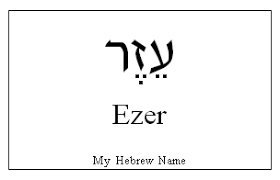
The originally one human being Adam/Eve was now to be separated
into two---differentiated in two separate persons. Both Adam and
Eve already existed as a single unit---as the word bara implies.
Having already created (bara) the soul and spirit of Adam/Eve,
and after having molded the body of the first man, God now makes
a division of this one compound man into male and female.
Placing
Adam into a deep sleep, God took a rib from the side of Adam and
made a woman. The Hebrew root (banah), translated made,
described God's making of Eve by taking her out of Adam/Eve. Banah means to construct or build, as when one builds a house or constructs
an Ark---this word implies creative artisanship by God.
Adam was formed but Eve was made!

The word translated for years as Adam's "rib" was more likely his baculum.
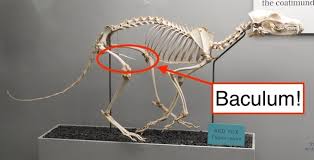
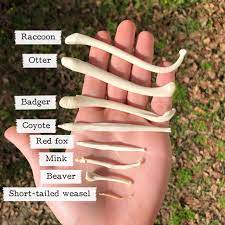 "It has been argued that the 'rib' Hebrew, tsela', also translated 'flank' or 'side') in the story of Adam and Eve is actually a mistranslation of a Biblical Hebrew euphemism for baculum, and that its removal from Adam in the Book of is a creation story to explain this absence (as well as the presence of the perineal raphe– as a resultant "scar") in humans. “Boner,” by the way,is a slang term for an erection, and also a slang term for an error or a stupid mistake." (Wikipedia)
"It has been argued that the 'rib' Hebrew, tsela', also translated 'flank' or 'side') in the story of Adam and Eve is actually a mistranslation of a Biblical Hebrew euphemism for baculum, and that its removal from Adam in the Book of is a creation story to explain this absence (as well as the presence of the perineal raphe– as a resultant "scar") in humans. “Boner,” by the way,is a slang term for an erection, and also a slang term for an error or a stupid mistake." (Wikipedia)
What is a baculum? The baculum (os penis bone) is a bone found within the penis of certain mammals, including many primates, rodents, bats, carnivores, and some insectivores. It is an isolated bone, derived from connective tissue and located at the distal end of the penis, above the urethra. Lower mineral density and reduced stiffness of the baculum compared to skeletal bones may help reduce the risk of fracture under strain during copulation, although breakage can sometimes occur.
You mentioned primates, do we humans have such a bone? No, human males don’t have a baculum! This is surprising because all other apes and Old World monkeys have one, despite a trend towards reduced size of the baculum among the great apes. As fossil primate bacula are extremely rare, it is unknown when the baculum was lost within the hominid lineage. And despite some speculation relating to upright posture and changing mating strategies, why human males lack a baculum remains enigmatic. (Paula Stockley, Current Biology Vol 22 No 24)

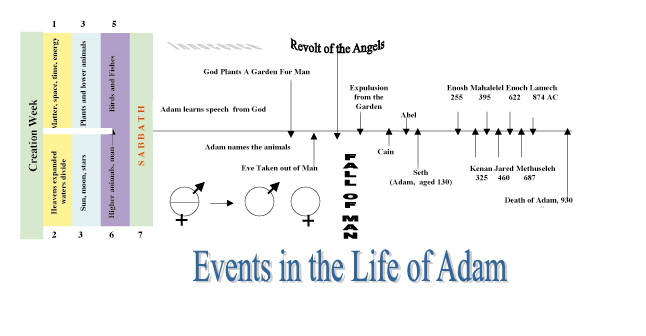

In summary, after God made "Adam/Eve" in His own image,
He subsequently separated the man whom He had made into two---Adam
and Eve. Thus, an original unity of "man" was replaced
by a division into two complementary opposites. The image of God
in our race is therefore carried by the man and the women in equal
weight. Whatever other terms we may wish to associate with man
being made in the image and likeness of God, the existence of
two separate sexes is a very important part of the image of God
which we, as men and women, jointly bear. It is as if half of
life is to be understood and interpreted from a man's point of
view and half from a woman's point of view. These two points of
view are not identical nor opposites, nor polarities, they are complementary.
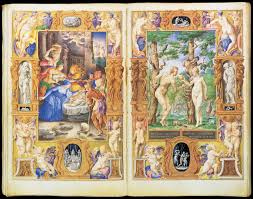 The existence of two sexes and the fact that it takes male and
female persons to adequately reflect the nature of God implies
that the Being of God is as much masculine as it is feminine.
This is a difficult concept because God Himself does not describe
Himself as a sexual being. All the persons of the Godhead are
called by masculine nouns and pronouns in our English Bibles. Furthermore the godhead
consists of a union of Three Persons, not two, as in human marriage.
We will have more to say about the inner nature of God as containing
both masculine and feminine attributes as we move along in our
study.
The existence of two sexes and the fact that it takes male and
female persons to adequately reflect the nature of God implies
that the Being of God is as much masculine as it is feminine.
This is a difficult concept because God Himself does not describe
Himself as a sexual being. All the persons of the Godhead are
called by masculine nouns and pronouns in our English Bibles. Furthermore the godhead
consists of a union of Three Persons, not two, as in human marriage.
We will have more to say about the inner nature of God as containing
both masculine and feminine attributes as we move along in our
study.
For purposes of discussion let us a build a model of sexual identity
based on what we have examined thus far concerning the creation
of man and woman as described in 1 and 2. First, let us
divide every man and woman into conscious and unconscious domains. Consciousness
is related to awareness and priorities in life that we are. God
has made us in such a way that many of our bodily and emotional
functions run automatically without our conscious control or intervention.
Heart rate rises or falls to meet the energy demands of our activity,
we digest our food, and we breathe automatically. Instincts alert
us concerning hunger and thirst. Much of the body runs on autopilot--we are fearfully and wonderfully made! Our ego can give us the mistaken impression that we know everything and are in complete control. Some people we know act like gods!
Our brain's memory banks record virtually everything we ever learn
and experience. Vast amounts of data every minute we live is stored in these records in cosmic "data centers"--for immediate
recall, or for later retrieval and review from deeper archival sources. Memory
is both conscious and unconscious. Under the stress of a sudden
accident, many people gain temporary total recall and see their
entire life story running before their mind's eye---on a fast-forward,
instant-replay mode.
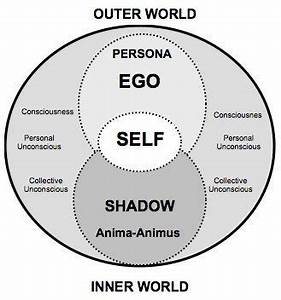
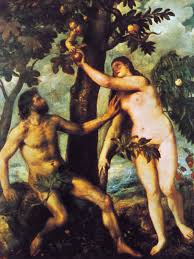
Right Image: Adam and Eve after Eve was taken out of Adam. We respond emotionally to situations in life with shame, fear,
guilt, joy, tears, or depression. Over most of these reactions
we have little control. The are built-in or they are conditioned
responses shaped by past response patterns. Our memory circuits
record not only experiences but associated colors, odors, sensations
and emotions experienced at the time.
Unpleasant experiences and
traumatic experiences in life tend to be repressed (buried in
the unconscious). Pleasureful vs. painful experiences produce
conditioned responses in us which become more or less automatic.
Finally, we are fallen creatures and subject to deeply self-centered
motivations, lusts, cravings, rage, hatred, murder, envy, sloth,
covetousness and the like. Accompanying our fallen nature is the
blindness of pride, self-deceit and closets of inner darkness
where the Enemy has established strongholds of bondage to habits,
obsessions, destructive behavior patterns---and so on.
Thus it
will be necessary to discuss both unfallen, and then fallen masculinity
and femininity, in order to arrive at a realistic model of our
humanity and our sexuality. Our goal is discover the path to wholeness
and completeness.

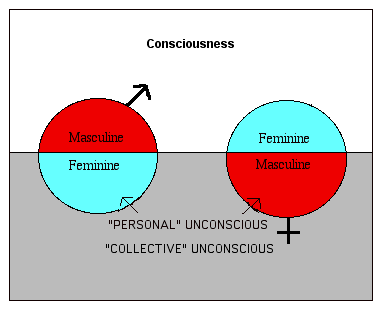
The two sexes are here depicted as having conscious and unconscious dimensions to their lives. Thus personality characteristics that
are dominant in a typical man's life are present, but "recessive"
or "unconscious" in a woman's psyche, and vice versa.
This is only a model but it helps us to understand how God has
designed the two sexes as mirrors for one another. The existence
of a "Collective" unconscious is disputed except for
the OT reference that all men "are bound up together in the
bundle of the living." The interaction between the sexes
is designed to help us attain to a state of individual wholeness
in life. In marriage, God has designed the two sexes to achieve
a profound union ("the two shall become one flesh").
This union can be thought of as occurring at both the conscious
and unconscious levels.
The moment we introduce the terms "conscious" and unconscious"
into our modeling approach, we immediately draw into the discussion
one or more schools of psychological thought. Since these prevailing
schools derive from secular models for the most part, we want
to stress once more that our desire is to create a reasonable
model in order to better see ourselves. There are a number of
Christian teachers today who object to all psychological models
and insist that we rely on the Bible alone for our understanding
of reality. We disagree with that viewpoint. As long as the Bible
sits in judgment over the knowledge we acquire from observation
and secular sources, we can expect to be on a sound track.
For example we know that men range widely in their degree of assertiveness,
or aggressiveness. By drawing caricatures of masculinity and femininity
we will call attention to polar opposites knowing well that no
real person fits these archetypal models. Our purpose is to point
out that no man is all "masculine" and that no woman
is all "feminine" but that men are in general more in
touch with their masculinity and women with their femininity,
but that each sex has received a heritage of both sets of qualities.
It is logical to think of this first in biological terms. Each
parent contributes 50% of the genetic inheritance of the embryonic
child. 50% of our biological heritage comes from our mother's
side of the family and 50% from our father's. (Our sexuality,
as is well known, is determined by the male sperm, whether it
is xx or xy as far as the sex-determining chromosome is determined).
At birth we are instantly identified as boy or girl and our parents
begin to raise us differently. Hormonal differences set into play
even before birth move us towards essential male/female differences.
At an early age we see ourselves as separate persons from our
mothers and begin to identify with mother or father as far as
our gender identity is concerned.
However each one of us can say--whether we are men or women---"I
am like my mother and I am like my father, both parents have influenced
me." The fact that I resemble both my parents in certain
character traits and behavior patterns is another way of stating
that I have received from both parents both a genetic biological
inheritance, and then, secondly, that I have been molded or shaped
in growing up by both male and female role models.
According to the Bible, man and woman are alike in spirit, but
not in soul and body. (For this reason the term "man"
or "brothers" is often generic in the Bible when doctrinal
teaching is in mind). The physical, anatomical differences between
the sexes are well known. However man and woman are also quite
different as far as the soul is concerned. One possible way of
differentiating between men and women in terms of priorities and
specialties is suggested by the following table. God has built
a vast wealth of variety and diversity into the human gene pool.
Many variations in physical characteristics as well as some personality
and emotional characteristics are governed by genetic factors.
In terms of behavior, there are wide ranges in what can be considered
normal masculinity and femininity.
MASCULINITY
LOGOS
|
FEMININITY
SOPHIA
|
Paternal Instincts
Leads, takes charge
Initiates: Hunts, Ranges, Thrusts
Values logical thinking
Logos-centered mind
Bases decisions on reasoning more than emotions or
intuition
Assertive, aggressive, outgoing towards the world
Provides outside support and protects (as a soldier)
Feels ill-at-ease in passive, receptive roles
May undervalue importance of emotions and intuition
Specialist in "Doingness," "Withoutness"
Mechanistic, scientific, digital-thinking
Divided left and right brain |
Maternal Instincts
Responder
Follower
Shelters, nurtures, heals
Values emotions highly, relationship orientation
Heightened intuitive ability and perception
Sophia-based thinking
At ease in a passive, receptive role
Takes leadership with difficulty when male leader
defaults
Natural concern for the present quality of life
Specialist in "Beingness" and "Withinness"
Nestles, nurtures, shelters, traps
Artistic, creative, analog thinking
More unified left and right brain, wholistic thinking |
To be certain that our meanings are clear, "masculinity"
is not identical with "manliness" and "femininity"
is not identical with being all-woman. Masculinity and femininity
are abstract qualities. For example we have stated by means of
the above table that masculinity specializes in initiating and
femininity specializes in responding. It is obvious that both
men and women constantly both initiate and respond. But we can
say that God is the most fully masculine Being who exists because
"from Him...are all things."
God is also love, according to the Apostle John. This means that
the Persons of the godhead dwell together in relationships of
love. The universe is designed to operate on the principle of
both giving and receiving love. Thus initiating and responding are complementary opposites.
We are defined masculinity in our table as characterized by Logos
truth. Jesus is called the Word of God (logos) in John's
Gospel. Logos truth is truth spelled out in logical, rational
statements. Jesus is the Word of God, He is the Truth because
in Him God has spelled out truth in human form. The Bible is called
the written Word of God. Scripture consists of sequential statements,
one following another, all self-consistent, all designed to appeal
to the logical mind. This is especially true of the New Testament.
(The Old Testament relies on stories and historical narratives
to illustrate truth in preference to doctrinal statements strung
out in logos fashion).
The Bible also presents truth in the form of pictures. Truth can
be intuitively perceived, or revealed as direct inner experience
in the heart. (In fact we must understand truth in our hearts
if it is to do us any good, head knowledge in and of itself is
of no avail. Also, truth which is not acted upon is lost). Truth
perceived in its non-verbal, intuitive mode can we called Wisdom.
Hence we have characterized femininity as specializing in Sophia
knowledge. In Solomon's Proverbs Wisdom is personified as a woman. The closer interconnected wiring between the two halves of the
brain in women causes them to think more holistically. Because
of the fall, when "Eve was deceived" a woman's intuition
is not infallible. Hence God has assigned Adam, and male elders
in the church the task of comparing truth in Logos form in order
to guard the family and the church from error which creeps in
constantly. Men specialize in being "logical" and most
men can set aside their intuition and emotions and the entire
right-side of their brains in the process. Of course this means
that men are vulnerable to pride and stubbornness, and so on.
Masculinity specializes in "doingness" and femininity
in "beingness." Men derive a great deal of their sense
of purpose in the world from their work, their competitive strivings
in the world. Men are therefore hunters and warriors who engage
in hunting, thrusting and ranging. This comes easily to them---by
nature---because such characteristics are archetypically masculine.
Archetypal femininity in contrast specializes in nurturing, sheltering,
nesting, healing. Men tend to measure themselves by how much they
accomplish. Women tend to measure themselves by the quality of
their relationships.
Our premise is that men come equipped with a dominant set of masculine
characteristics and a recessive set of feminine characteristics.
A whole man gets in touch with his "other half within himself."
A whole man succeeds in integrating these "two halves"
of his psycho-sexual inheritance.
A man who is only in touch with his masculinity is likely to be
driven, cold, hard-nosed, uncompromising, overly competitive.
A woman who knows nothing of her masculine heritage is likely
to be a passive wall-flower, helpless, driven by her emotions
and often depend on others for almost everything.
Men who "get in touch" with their femininity do not
become effeminate. In fact effeminacy in men means a man is especially
unaware and usually enslaved by his inner feminine inheritance.
Whole men are strong and brave and assertive when the situation
demands strength, courage, and self-sacrifice. But he is also
tender, meek, humble, able to cry and show compassion and tenderness.
From the Bible we immediately recognize that Jesus is the whole man with whom we are to identify.
Women who get in touch with the masculine heritage, which they
have received from their fathers as it were, do not become coarse
and tough and competitive as if they were as male as any man.
Integration of the other half adds poise, self-confidence, and
dignity to a woman's life actually enhancing her true femininity
and causing men to respect her even more highly and to seek her
wisdom and help in making life's decisions.

The Fall of Adam and Eve has Ruined the Human Race

The human race is fallen, self-centered, corrupted and mortally
damaged by the sin of Adam. All aspects of our humanity have been
affected. For the sake of discussion one can make a table of what
might be considered archetypal aspects of our fallen sexuality.
The table below is suggested as a model for discussion purposes
and is not a description of specific men or women, obviously!
| NEGATIVE MASCULINITY |
NEGATIVE FEMININITY |
Beast-like
Authoritarian, domineering, ruthless, despotic
Lords it over others
Devalues importance of emotions
Overly logical, methodical, rigid
Cold, indifferent, impersonal, unapproachable
Demands respect of subordinates
Intimidates others or rules them by fear
Unforgiving, and unwilling to be a team-member
Boring, unimaginative, overly self-controlled
Overly logical, unable to be spontaneous
Willing to compromise to gain position or power
A beast, tyrant or a despot |
Harlot-like
Possessive, controlling,
Manipulative, contriving
Irrational in rejecting logic, emotionally controlled
Gives love or affection but extracts a price
Selfishly concerned with appearances and prestige
Entraps others for her own purposes
Demands attention and recognition
A witch, sorceress or seductress |
Once we make allowances for a fallen world and inherent self-centeredness
in both sexes it begins to be clear that the relationship between
the sexes ought to be impossible and totally without hope. Probably
this would be so, were it not for the grace of God and the redemption
God has made available to mankind---beginning with his restoration
and re-creation of Adam and Eve after their fall.
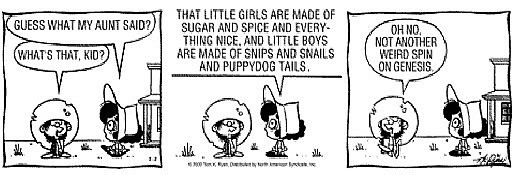 The common experience of "love at first sight" or
"falling in love" is largely usually what psychologists
call projection. In the mechanism of projection we see others
at first in an idealistic way based on our unconscious expectations
or past experiences. The process of becoming whole men and women
in Christ aids us in seeing the other person as he or she really
is. We were asked by God to learn to love others unselfishly and
to give to them in ways that are edifying and redemptive. To do
this, we must learn to discern between lust, selfish desire, need-love-and
agape love which seeks the best for the Beloved no matter the
cost to oneself.
The common experience of "love at first sight" or
"falling in love" is largely usually what psychologists
call projection. In the mechanism of projection we see others
at first in an idealistic way based on our unconscious expectations
or past experiences. The process of becoming whole men and women
in Christ aids us in seeing the other person as he or she really
is. We were asked by God to learn to love others unselfishly and
to give to them in ways that are edifying and redemptive. To do
this, we must learn to discern between lust, selfish desire, need-love-and
agape love which seeks the best for the Beloved no matter the
cost to oneself.
Romantic attractions, based on mutual projections,
can be (and usually are) dysfunctional if not dealt with. Unhealthy
mutual projections are suggested by the accompanying two diagrams
(to be added later). In addition to a conscious relationships
these projections constitute a kind of hidden agenda that may
or may not work to the good of the parties involved. In the case
of homosexuality there is an additional dysfunctional involvement
by means of an unconscious identification with the archetype of
the great mother, the goddess of pagan religion, as a later accompanying
diagram depicts. All sexual immorality is idolatry no matter what
form it takes.
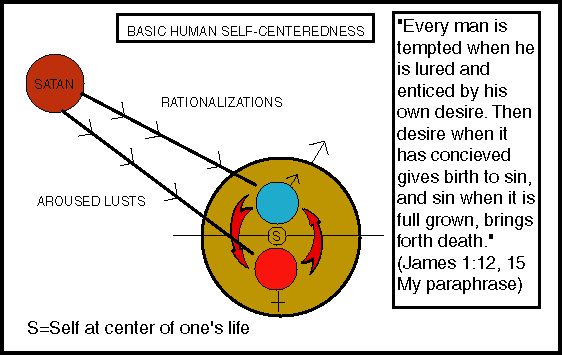 The entrance of evil into the universe has thrown immense disorder
into the natural world, and brought mortality to man. One of the
central marks of sin in man is self-centeredness. All types of
sin involve this kind of selfish action.
The entrance of evil into the universe has thrown immense disorder
into the natural world, and brought mortality to man. One of the
central marks of sin in man is self-centeredness. All types of
sin involve this kind of selfish action.
The first Adam and his
wife head the entire fallen race of mankind as we presently know
man on earth. The Second, or Last Adam, "the man from heaven,"
is the head of a whole new race of redeemed mankind chosen out
from among both Jews and Gentiles.
The old creation is subject
to the Second Law of Thermodynamics---and man is subject to death
because of sin, but all things are made new in Christ. Basic human
selfishness is the subject of James 1:14,15, a revealing description
of how fallen archetypal masculinity and femininity co-operate
together in each one of us to "conceive" sin and "bring
forth" death.
See Man's Lost Dominion on the consequences of the Fall. The Ego Papers addresses our common problem of wanting to be God. see what you think about your place in the cosmos, your role in history.


God's New Creation
When we enter into a personal relationship with Jesus Christ
as Lord and Master, we each become part of the new creation. Jesus,
by the Holy Spirit takes up His residence in the center of our
hearts to build within us a new life and into a new kingdom which He will soon usher in.
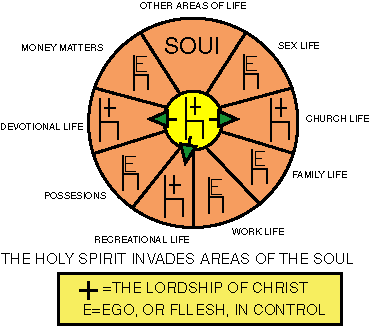 After receiving Christ we are free to go our own way once again,
in which case "self" is temporarily back on the throne
of our hearts once again. In this case we become, once more, slaves
of sin instead of free persons in Christ. The Apostle Paul prays
for us in this way,
After receiving Christ we are free to go our own way once again,
in which case "self" is temporarily back on the throne
of our hearts once again. In this case we become, once more, slaves
of sin instead of free persons in Christ. The Apostle Paul prays
for us in this way,
"...that Christ may dwell in your
hearts through faith; that you, being rooted and grounded in
love, may have power to comprehend together with all the saints
what is the breadth and length and height and depth, and to know
the love of Christ which surpasses knowledge, that you may be
filled with all the fullness of God." (Ephesians 3:17-19)
We began by showing that the first woman, Eve, was taken out
of the first man, Adam, and presented to him as a bride. Just
as the "First Adam" was originally Adam/Eve, so the
"Last Adam" is associated with a "Second Eve,"
the blood-bought church which is His bride, in a sense taken out
His wounded side when He died on the cross.
Jesus is called "The Word of God" by the Apostle John,
and Paul identifies Him as the "Wisdom of God." Solomon
depicts Wisdom as a woman in the Book of Proverbs. This Wisdom
was present at the foundation of the world, (Proverbs 8:22-31). The
image of God in man remains masculine/feminine in the new race
of mankind Christ is bringing into being.
"Let us rejoice and exult and give
him the glory, for the marriage of the Lamb has come, and his
Bride has made herself ready; it was granted her to be clothed
with fine linen, bright and pure-for the fine linen is the righteous
deeds of the saints. And the angel said to me, 'Write this: Blessed
are those who are invited to the marriage supper of the Lamb.'"
(Revelation 19:7-9)
Of course only true biological heterosexuals can enter into a marriage, since
a re-union of complementary opposites is what God intended from
the beginning. Marriage is the oldest institution in society since
it dates to the garden of Eden. The Law of Moses and God's dealings
with His people Israel reveal the Lord's ongoing commitment to
marriage. In fact in books such as Hosea, God pictures Himself
as the Husband of Israel who laments over an increasingly spiritually-adulterous
wife. Malachi closes the Old Testament by lamenting over divorce
while reaffirming God's love for the family. Because of her spiritual
adultery, God was reluctantly forced to put away his wife Israel
under the terms of the Old Covenant. However because of the abundant
forgiveness and mercy purchased by Jesus the Messiah, under the
New Covenant God is able to enter into a new marriage relationship
with both Israel, and many others of us as well, who are gentiles,
and who were previously outside the bounds of God's covenant love.
God's goal for the individual is wholeness (holiness). This is
achieved only by an inner reconciliation and union of our broken,
fallen M/F condition inherited from Adam and Eve. No man is pure
masculinity and no woman all femininity. Rather, wholeness implies
a balance between these qualities in each of us. Our biological
sexual identity tells us which set of M/F characteristics is dominant
and which is secondary. Christians are destined for wholeness
whether single or married, since "You are complete in Christ
who is the head of all rule and authority." The New Testament
reaffirms the central importance of marriage and the family. But singles are as complete in Christ as those married are! The
church constitutes a new family of mankind as well, Christians
are brothers and sisters who have one God and Father. The true
church, "Jerusalem above," is "the mother of us
all." (Galatians 4:26) The relationship between man and wife in
marriage is compared to the relationship between Christ and His Bride, the church in Paul's letter to the Ephesians:
"For the husband is the head of the
wife as Christ is the head of the church, his body, and is himself
its Savior. As the church is subject to Christ, so let wives
also be subject in everything to their husbands. Husbands, love
your wives, as Christ loved the church and gave himself up for
her, that he might sanctify her, having cleansed her by the washing
of water with the word, that he might present the church to himself
in splendor, without spot or wrinkle or any such thing, that
she might be holy and without blemish. Even so husbands should
love their wives as their own bodies. He who loves his wife loves
himself. For no man ever hates his own flesh, but nourishes and
cherishes it, as Christ does the church, because we are members
of his body. 'For this reason a man shall leave his father and
mother and be joined to his wife, and the two shall become one
flesh.' This mystery is a profound one, and I am saying that
it refers to Christ and the church..." (Ephesians 5:23-32)
Marriage pictures for us wholeness. This is to be more than
the re-union of Adam and Eve but the creation of a mystical great
communion and community between the Lord Jesus Christ and His
people, the Bride of Christ. Inwardly in her relationship with
the Lord Jesus, the church is feminine, that is submissive-a receptor,
and responder. She is being made ready for the Marriage Supper
of the Lamb. Individual believers love the Lord Jesus and follow
Him in the same way that the Shulamite maiden follows Solomon
in the love poem Song of Solomon. The Bridegroom calls to His
bride,
"Set me as a seal upon your heart,
as a seal upon your arm;
for love is strong as death, jealousy
is cruel as the grave.
Its flashes are flashes of fire, a most
vehement flame.
Many waters cannot quench love, neither can floods
drown it.
If a man offered for love all the wealth of his house,
it would be utterly scorned."
(Song of Solomon 8:6,7).

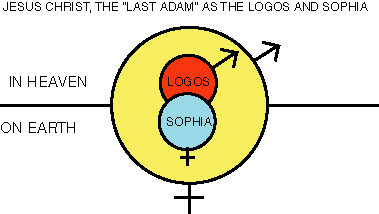
The church is also called "the Body of Christ." This
is a masculine figure of the soldier, the warrior, the kingly.
Jesus is the Head of the Body, He sends resurrection life and
spiritual nourishment through the entire body. Wherever the Body
of Christ is in the world, there also is the Lord Jesus. Jesus
indwells His church. Thus in relationship to the world, the church
is masculine. The church as seen by the world is a mighty army!
Masculinity and femininity are thus inner and outer aspects of
the same reality---which ultimately reflects something of the
perfect union of the Persons in the godhead. Jesus has joined
Himself to the church which is His Body---where the church is,
there He is also.
"Who is this who looks forth like
the dawn,
fair as the moon, bright as the sun,
terrible as an army with banners?" (Song 6:10)
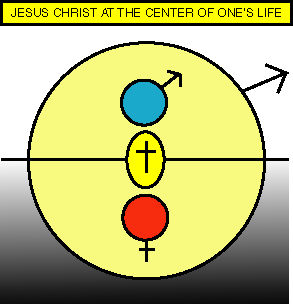
The sketch on the right shows that the presence of Christ
within the human heart brings and integrating, healing, peacemaking
life-force within. In terms of the masculinity and femininity
within each person, an inner marriage ought to be the result.
This of course ties in with the ideas of wholeness presented above.
Carl Jung wrote extensively about this union of masculinity and
femininity within the individual as a conjunction of opposites
from which he derived great mystical significance by linking this
concept to medieval alchemy and to gnosticism.
It is not necessary
for us to excurse that far afield in this brief study. We are writing neither
new theology or new psychology but merely attempting to hold the
mirror of God's word before our eyes. Once the inherent differences
between the sexes is perceived, once a person has made peace with
God, it is time to get moving on one's own personal adventure
of faith with the understanding that God intends to make each
one of us whole persons--in fact to conform us to the very likeness
of His Son.
How far down did Adam and Eve fall? All the way! No amount of training, good parenting, good role models, lower education, higher education, peer pressure, government provisions, incarceration, or religion in any form addresses either the root causes or the solution provided for us by a compassionate loving Creator.


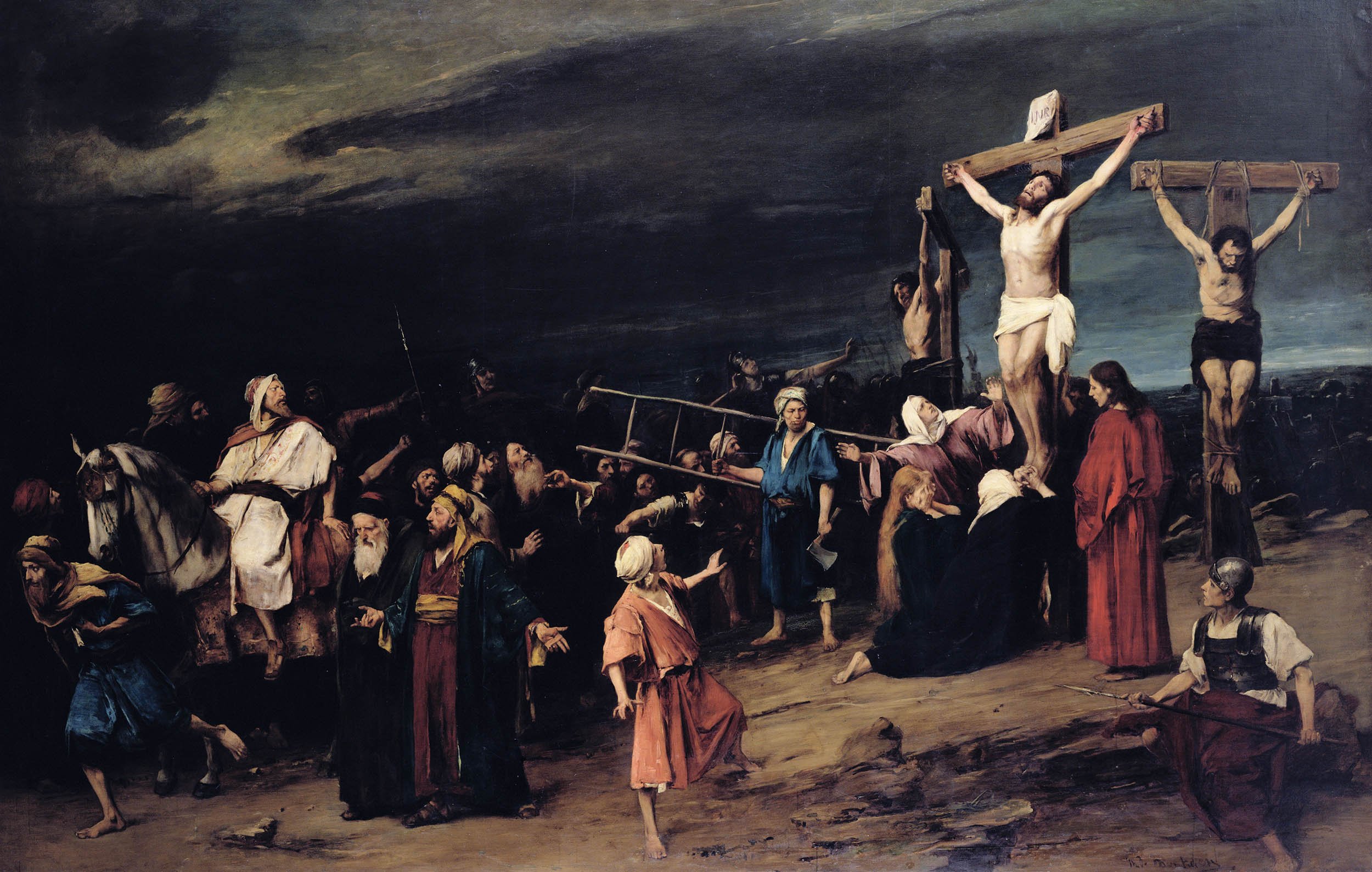

NOTES AND LINKS
1. James Montgomery Boice, : An Expositional Commentary, Zondervan, Grand
Rapids, 1987. Ray Stedman's commentary on is online.
2. Although Moses compiled the Pentateuch about 1400 BC it is
likely that he had written source documents available. This theory,
often called the Toledoth hypothesis, suggests that the author
of Chapter 1:1 through 2:4a was the Holy Spirit Himself since
there was no human observer to record the events of creation week.
Then, Adam could have actually left a written record which comprises
2:4b through 5:1. Noah evidently wrote down this section
of and passed it on to his sons in written form. Noah's
three sons seem to be credited with the section of which
concludes with 10:1. Shem's contribution is reflected in the abbreviate
account of Japheth's lineage (they were scattered abroad and probably
lost touch with Shem), and the full detail preserved concerning
the descendants of Shem. Terah perhaps kept the brief record from
11:10-27. The line of Ishmael is noted in the brief section that
ends with the signature of 25:12. The divisions are marked by
the term, "these are the generations of..." See also
25:19, 36:1, 36:9, and 37:2.
Keys to the Song of Solomon (190k)
Papers on Creation by Lambert Dolphin
Yin, Yang, the Tao and Wholeness
The Ruin of Creation
The Absolutes of God
The Anguish of Adam
Jesus and the Homosexual
Logos and Sophia
It takes Three to Tango
Jewish Wedding Traditions
Psalm 45: The Wedding Psalm
The Ultimate Wedding
The Marriage Supper of the Lamb
Intimacy with Jesus
Adam's Diary of Creation and the Fall
Pots, Potter and Clay
3. Notes on God as Masculine, by Richard E. Young
Question: Some have thought
that because God is referred to by masculine pronouns that He
is male. But the Bible teaches that God is spirit and has no gender.
So why then is God referred to as a "He"?
Response: The reason why God is translated as a
"He" in English is because in Hebrew nouns have only
two genders: masculine and feminine. Now it is a mistake to associate
masculine nouns as necessarily meaning "male" and feminine
nouns as necessarily meaning "female." These two genders
are only two groupings of words; most male items tend to fall
into one grouping and most female items tend to fall into the
other grouping. For example, in Hebrew, body parts that come in
pairs (hands, eyes, etc) are typically feminine, whereas those
body parts that come as single (nose, back, etc) are masculine.
They have nothing at all to do with sex. "Elohiym,"
for example, is a masculine (note: NOT "male") noun.
Thus, because the nouns associated with God are masculine does
not necessarily imply that God is male anymore than the breast
of a woman is male (the Hebrew word for breast, shad, is a masculine
noun).
Nevertheless, to accurately translate
the Hebrew and be true to the original the "he" is retained.
It is clear in the Scriptures that God is neither male nor female;
but to render God in English in the neuter (which Hebrew does
not posses) would tend to give a false impression of God being
an impersonal "it" and not a person. So I suppose in
the best of all possible worlds "God" should have His
own category which is neither masculine, feminine, or neuter.
Perhaps we could call it the "divine" gender? I suppose
the capitalization of "He" provides such a gender. But
we are dealing with human language - so there we are. We have
to communicate to people and not create a new language.
However, it is not quite accurate
to say that God is neither male nor female. In a sense, male and
female together represent God. That is, when God created Adam
and Eve they together represented His image:
"God created
man in His own image, in the image of God He created him; male
and female He created them. (Gen 1:27);
and,
"He created them male and female,
and He blessed them and named them Man in the day when they were
created. (Gen 5:2).
Individually the male and female
are an incomplete image of God. Together they represent God's
image more clearly. Another aspect of this topic is the similes
and metaphors used in the Bible to describe God. Figurative language
in the Bible describes God in terms of such things as a father (Deuteronomy 32:6; Matthew 5:45), a mother (Isaiah 66:13; 1 Corinthians 3:1-2), a king (Isaiah 33:22; I Timothy 1:17), and even as a mother bird (Psalm 36:7; Matthew
23:37). It is important to realize that these things reflect aspects
of God's nature and not the other way around. That is, fatherhood,
motherhood, kingship, and the protective nature of a hen for her
chicks, among others, are partial images of God's nature and relationship
to us. None of them by themselves describe the full picture. However,
some images are more accurate representations than others. Since
man is made in God's image then either a father or mother would
present a better picture than a mother hen.
But of all of the figurative images
used to describe God the most prevalent portray God in male roles:
God as a husband to Israel, Christ as a groom to the Church, and
God depicted as "father. The image of father is particularly
prevalent with Jesus in the New Testament. And this is another
reason why God is thought of in masculine terms. But why is this
male image so deep-seated? Some suggest that a male-dominated
society artificially imposed and promoted this image. But there
is a less skeptical view that can be taken. Though both male and
female are together representative of God, His relationship to
humans seems to be primarily centered around a fatherly relationship.
It is important to realize that this in no way detracts from that
part of God that is reflected by the female. In the Mosaic Law
both the father and mother are to be honored by the children (Exodus
20:12); the fullness of God is honored and not just that part
that is reflected by the male. The emphasis of God in male roles
only indicates that God seems to relate and deal with humans in
a way that we see illustrated by male roles.
Many have thought it significant
that the first use of the word "love in the Bible speaks
of the love of a father for his son ( 22:2).
Noted Added 9/9/2007. The Holy Spirit as "She"? For theological rather than linguistic reasons, some members of the committee were disturbed at referring to the Spirit of God as "she" in Hebrew. They argued that since the Bible consistently speaks of God as "he," the Spirit of God should be referred to in the same gender. The ambivalent gender of the word ruach in Biblical Hebrew would allow this.
In response to the suggestion to render the gender of ruach as masculine, research was done in several areas, one of which was modern Hebrew usage. All dictionaries of modern Hebrew agreed that ruach is viewed as a feminine noun, although they did not relate to the specific problem of ruach 'elohim, the Spirit of God) or ruach hakodesh, the Holy Spirit.
The committee then went to the Hebrew Scriptures, where it was found that ruach is treated as both masculine and feminine. In fact, in one particularly interesting verse, I Kings 19:11, the wind which Elijah saw at Horeb is described as ruach gedolah vehazak, a great and powerful wind, using one feminine and one masculine adjective to modify it. --from The Holy Spirit in the New Testament by Ray Pitz.

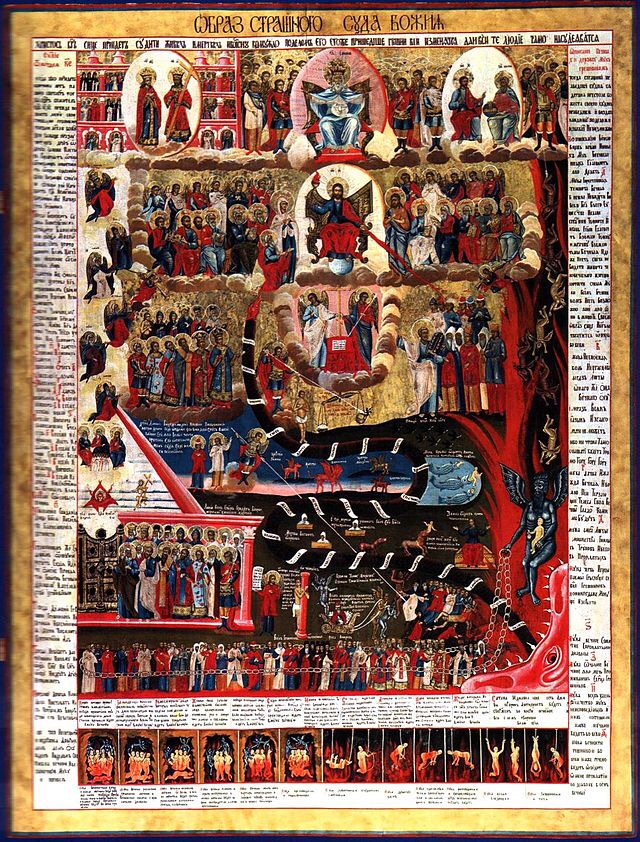 Addendum: A Jewish Perspective
Addendum: A Jewish Perspective
RENEWING THE VISION OF ZION: THE UNIVERSAL JOURNEY, by Yosef Ben Shlomo HaKohen,
Root and Branch Association, Ltd., Renewing the Vision of Zion Series -- Essay 32
LIBERATED YERUSHALIYIM, D.C. (David's Capital), (Fifth Day -- "Thursday"), 13 Tishrei, 5764, (Gregorian Date: October 9, 2003) (Hijri Date: 12 Shabaan, 1424), Root and Branch Association.
The Compassionate One said to Abram, "Go to yourself from your land, from your relatives, and from your father's house, to the land that I will show you".
[Bereshit/ 12:1]
Our journey to the Land of Zion began with a Divine call to Abram --
whose name will later be changed to Abraham -- to leave the familiar environment of his family
and country and journey to a new land. The verse opens with the Hebrew words "Lech Lecha",
which literally mean: "Go to Yourself." The Bible commentator of the late 16th and early
17th century, the K'li Yakar, interprets these words to mean: "Go to your essence". According to the K'li Yakar, Abraham is to rediscover his essence by returning to the land where "Adam" -- the human being -- was created. He quotes various midrashim which state that it was on Mount Moriah in Jerusalem where the soul and the body were joined together by the Creator to form the human being. Abraham's journey is therefore to be understood as a return to the land of the human being's primary roots. In order to gain a deeper understanding of this journey, we need to review a verse which begins to describe how "Elohim" -- the Just One -- created the human being:
So the Just One created the Adam in His image, in the image of the Just One He created him; male and female He created them.
[Bereshit/ 1:27]
What is puzzling about the above verse is that the first half of the verse implies that the Just One created a single human being, as it states, "He created him", while the second half of this verse implies that the Just One created two human beings, as it states, "male and female He created them".
One of the ways in which the Bible commentator, Rashi, resolves this difficulty is through citing the midrashic teaching that the Adam was first created as a single androgynous being with two faces and two sides - male and female. (1)
This interpretation can help us to understand the verses which describe the formation of the first woman:
So the Compassionate and Just One cast a deep sleep upon the Adam, and he slept; and He took one of his sides and He filled in flesh in its place. Then the Compassionate and Just One fashioned the side that he had taken from the Adam into a woman, and He brought her to the man.
[Bereshit/ 2:21-22]
The Creator took the female side of the Adam and formed a second being known as "woman". The Hebrew word for "side" in the above verses is tzela. The word tzela can also be translated as a "rib"; however, Rashi and the majority of our Bible commentators translate it as "side". (2)
Where was the androgynous being called "Adam" created? An answer can be found in the Midrash, which states that Adam was created at the site of the future Temple in Jerusalem:
With an abounding love did the Holy One, blessed be He, love the first human being, as He created him in a pure locality, in the place of the Temple.
[Pirkei D'Rabbi Eliezer, chapter 12]
This interpretation is found in other midrashic works, and it indicates that the journey to Zion is a return to the place where the human being was created. And the human being is a union of body and soul, as it is written:
And God formed the human of dust from the ground, and He blew into his nostrils the soul of life; and the human became a living being.
[Bereshit/ 2:7]
The journey to Zion is therefore a journey to the sacred mountain where the body and soul -- the physical and the spiritual -- became one. And one day, all human beings will journey to this sacred mountain:
It will happen at the end of days: The mountain of the Temple of the Compassionate One will be firmly established as the head of the mountains, and it will be exalted above the hills, and all the nations will stream to it.
[Yeshayahu/Isaiah 2:2]
Shabbat Shalom, Shana Tova (Happy New Year) and Chag Sameach (Happy Sukkot) from Liberated Yerushaliyim,
Notes:
1. The teaching that the Adam was created as an androgynous being is found in Midrash Rabbah 8:1, as well as in various tractates of the Talmud, such as Babylonian Talmud/Tractates Brachos 6a and Eruvin 18a.
2. Another place in the Torah [Shemot/Exodus 26:20] where the world "tzela" means "side" is found in the story of how our ancestors built the Tabernacle: "For the second tzela of the Tabernacle to the north -- twenty planks".
3. Addendum: THE HUMAN SOUL: FEMALE SEXUALITY AND THE SOUL
Human Soul Series: Essay Twenty One B, [copyright (c) 2004] by Mr. Yosef Ben Shlomo HaKohen
"The mitzvos were given in order to refine human beings." [Teaching of the Talmudic sage, Rav, cited in Rabbah 44:1]
The mitzvos (commandments) of the Torah were given to refine human beings.
Although most of the mitzvos are binding on both men and women, there are some mitzvos,
such as Bris Milah (circumcision), which only men have an obligation to do.
According to Rabbi Samson Raphael Hirsch, if women were not given certain mitzvos to perform,
it is because they do not need the particular form of refinement and purification that these mitzvos are supposed to bring. As a number of stories in the Torah indicate, states Rabbi Hirsch, women tend to have greater
fervor and enthusiasm for the call to serve the Compassionate One. Men, however, require repeated exhortation to remain
true to this call. Thus, they are given certain mitzvos, such as Bris Milah, which serve as a reminder of the
Divine calling (please see Rabbi Hirsch's commentary to Vayikra/Leviticus 23:43).
The following personal story helped me to understand Rabbi Hirsch's comments: During the 1970's and early 80's,
I was connected to a network of young Jewish men and women who were exploring their Jewish roots.
They were progressive individuals who were concerned about the issues of the day, and they had various meetings
and retreats where these issues were discussed from a Jewish perspective.
Once, the women demanded a meeting to discuss the issue of male sexual exploitation. At the meeting,
the women complained that many "idealistic" men in the group became very friendly with them, slept with them,
and as soon as the men get the sex they wanted, the women never heard from them again. I discovered that women
in other progressive groups were voicing the same complaint about their "idealistic" male colleagues.
The public discussion of this issue helped me to realize that the majority of women associate sex with love,
nurturing, and a close relationship, while the majority of men tend to think of sex without necessarily associating
it with love, nurturing, and a close relationship. Promiscuous sexual behavior is more prevalent among men than
among women, and one does not have to be a sociologist to realize this. The difference between the way men and
women approach sex can also affect the happiness of a marriage. As we shall discuss in the section, "Related Teachings",
which appears at the end of this letter, the Torah obligates a husband to meet his wife's need for satisfying,
loving and nurturing sexual relations.
Why do the majority of women tend to be more loving and caring then the majority of men with regard to their sexual
relationships? It is because they are closer to the Shekinah -- the Divine Presence. According to Jewish tradition,
the Shekinah expresses the "feminine" attributes of the Creator. Thus, She provides us with motherly love, compassion,
empathy, nurturing, and protection. Our Sacred Scriptures contain references to some of these feminine Divine attributes.
For example, the Compassionate One proclaims, "Like a person whose mother comforts him, so will I comfort you, and in
Jerusalem you will be comforted" [Yeshayahu/Isaiah 66:13]. Our Mother loves us and yearns for us, even when She rebukes
us for abandoning the sacred path of mitzvos. Thus, She proclaims: "Is not Ephraim My precious child,
the child of My tender care? For even while I speak against him, I remember him constantly; therefore
My innards yearn for him; I will surely have compassion upon him, spoke the Compassionate One" [Yirmiyahu/Jeremiah 31:19].
The classical Bible commentator, Rashi, in his commentary on this verse, writes, "These are the words of the Shekinah --
the Divine Presence".
In addition, states the Ramban, another classical Bible commentator, the Shekinah is called "tzedek" --
a biblical term for "justice" (please see Ramban commentary on Bereshit/ 14:18). Why is the Shekinah called "tzedek"?
According to Rabbi Hirsch, "tzedek" refers to the goal where every creature is entitled to receive the caring and nurturing
it needs in order to fulfill its purpose within the creation (please see Rabbi Hirsch commentary on Bereshit/ 15:6).
This caring and nurturing is the goal of the Shekinah.
The feminine attributes within women make it easier for them to emulate the feminine attributes of the Shekinah and to
thereby achieve the life-affirming goal of the Shekinah:Ê Tzedek! The Torah, however, wants men to also serve the
life-affirming goal of the Shekinah. In this spirit, the Midrash teaches that before the Bris Milah can take place,
the male baby must first honor the Shekinah! The Midrash teaches that Shabbos -- the sacred seventh day --
represents the Shekinah, and each male baby must first experience a Shabbos before we can bring the "offering" of his
Bris Milah. In this way, the baby will have the opportunity to greet and honor the Shekinah -- the Shabbos Queen.
This is why, explains the Midrash, circumcision takes place on the eighth day, for an eight day period has at least one Shabbos.
The Midrash conveys this teaching with the following parable:
There was a king who decreed that before anyone could enter his presence, one would first have to see the queen.
So too, the Holy One, Blessed He, said: "Do not bring before Me the offering until a Shabbos has passed.
For each week contains a Shabbos, so there can be no Bris Milah (on the 8th day) without a Shabbos". [Leviticus Rabbah 27:9]
Ashkenazi Jews have a custom to have a celebration in honor of a newborn baby boy on the first Friday night of
his life (Yorah Deah 265, Rama). According to a noted commentator on Torah law, known as the Taz, the reason for
this celebration is found in the above Midrash. On Shabbos, the male baby is greeting the Queen -- the Shekinah --
before his Bris Milah takes place, and this is cause for celebration!
The Torah reveals that right after Abraham fulfilled the Covenant of Circumcision, "the Compassionate One appeared to him" [Bereshit/ 18:1]. The Talmud explains that this was the appearance of the Shekinah. According to Rabbenu Bachya,
a 13th century sage, this verse is conveying the following message: "By virtue of the mitzvah of circumcision, man
receives the Shekinah" (Kad HaKemach - Bris Milah).
The above teachings help us to understand how the Covenant of Circumcision enables the man to return to his
original state of wholeness, when all his drives expressed the Divine image. Through this covenant, masculine energy
is dedicated to serving the Shekinah. This covenant therefore serves as a reminder that masculine energy is not to be
used for the exploitation of others. Instead, it must be used for loving, nurturing, and protecting others.
In this way, masculine energy joins with feminine energy in serving and protecting God's creation. And the male and the
female will once again be united like they were in the Garden of Eden.
Shavua Tov from Liberated Yerushaliyim, Mr. Yosef Ben Shlomo Hakohen
Advisory Board Member, Ecology Fellowship, Root & Branch Association, Ltd.
Advisory Board Member, Social Welfare Fellowship, Root & Branch Association, Ltd.
Author, "The Universal Jew" (Feldheim Publishers)
Editor, Shema Yisrael website: "Hazon: Our Universal Vision"
Related Teachings:
Dr. Leo Levi, a Torah scholar and scientist who lives in Bayit Vegan, Jerusalem, is the author of a number of books,
including "Modern Liberation: A Torah Perspective on Contemporary Lifestyles". This book has a fascinating chapter
which gives a Torah perspective on sexual relations within marriage. As Dr. Levi remind us, through this holy union,
"they shall become one flesh" [Bereshit/ 2:24]; through this holy union, they become one being. Dr. Levi cites
noted commentators who explain that this physical, psychological, and spiritual unification is special to humankind,
the result of man and woman having been created originally as a single organism. Their sexual intimacy therefore reminds
them of their essential oneness and reinforces it.
Dr. Levi cites sources within the Written Torah, Talmud, and Codes of Jewish law which indicate that there is a mitzvah
for a husband to meet his wife's need for satisfying, loving, and nurturing sexual relations. This mitzvah --
known as "onah" -- includes not only the sex act, but also other expressions of affection. Dr. Levi writes,
"This is in striking contrast to the pre-modern Western mores that viewed sex as the husband's right and the wife's duty".
Dr. Levi adds, "That the mitzvah of onah goes beyond the obligation to be fruitful and multiply is evident from the fact
that it applies also at times when reproduction is not possible, such as during pregnancy or after menopause".
As Dr. Levi reminds us, Judaism teaches that sexual relations should promote mutual joy. For example, since the wife
usually requires more time for her arousal, the Sages stressed the importance of loving words and acts of endearment before
the union. In this spirit, the Ramban gives the husband the following words of guidance: "You should first arouse her
with words that draw close her heart and settle her mind and gladden her, in order to unite your mind with hers,
and your intention with hers" (The Holy Letter 6). The husband and wife should remember, however, that their sexual
union is a holy act; thus, they must avoid any preliminary conversation which contains mockery or vulgarity.
The following teaching regarding the husband's obligation is from Rav Ya'akov Yisrael Kanievsky, a leading sage of our
generation who lives in Bnei Brak, Israel:
"According to the laws of the Torah, it is forbidden to unite in a manner that does not satisfy the wife; he is
obligated to satisfy her with closeness, embrace, and kissing, until she desires the union; for else she is 'as one
put before a lion who pounces and devours'. It is a serious sin to deprive one's wife of that which is her due".
The kabbalist, Rav Yitzchak Luria (the Ari), recommends that the couple remain united for some time, even after
the seed is released. In this spirit, Rav Kanievsky writes that he who separates immediately is surely reprehensible
because of the pain and the secret tears he causes his wife.
Since sexual relations between husband and wife should promote mutual joy, Dr. Levi also cites some Torah
recommendations and guidelines for the wife. People in Israel who wish to get this book, can contact
Dr. Levi at: mailto:levileo@jct.ac.il. Those outside of Israel should contact: Lambda Publications, 3709 13th Ave,
Brooklyn, N.Y. 11218. Tel: (718) 972-5449. If you have any questions on the above teachings and laws regarding sexual
relations, please ask a rabbi or write to Dr. Levi, who is also a rabbi.


Comparing the two sexes

Made in the Image of God
Series: The Creation of Everything
Email Lambert
Lambert Dolphin's Place (Home Page)
Lambert Dolphin's Original Web Site (1995)
Lambert's Personal Testimony
Newsletters by Lambert

Library Annex (900+ new articles since 2018)
Help Thyself. No Charge
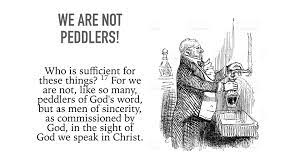

Originated February 27, 1991, revised July 16, 1994, and April 12, 1995.
November 10, 2000. July 11, 2001.
October 9, 2003. May 17, 2004. September 9, 2007. July 18, 2020. September 4, 2020.
July 25, 2022. October 12, 2022.
December 16, 2022.
April 28, 2023. May 16, 2023. August 28, 2023.

 and flesh of my flesh;
she shall be called Woman, because she was taken out of Man.'"
( 1:26,27; 2:22-25)
and flesh of my flesh;
she shall be called Woman, because she was taken out of Man.'"
( 1:26,27; 2:22-25) The description in Genesis 2 of the origin of the woman Eve is
preceded by Adam's naming of the animals. He was to study and
analyze the thousands of kinds of animals God had made. He was
to choose names that suited the characteristics of each of the
animals. Adam may have been occupied with naming the animals and tending the Garden in Eden
The description in Genesis 2 of the origin of the woman Eve is
preceded by Adam's naming of the animals. He was to study and
analyze the thousands of kinds of animals God had made. He was
to choose names that suited the characteristics of each of the
animals. Adam may have been occupied with naming the animals and tending the Garden in Eden 

 "It has been argued that the 'rib' Hebrew, tsela', also translated 'flank' or 'side') in the story of Adam and Eve is actually a mistranslation of a Biblical Hebrew euphemism for baculum, and that its removal from Adam in the Book of is a creation story to explain this absence (as well as the presence of the perineal raphe– as a resultant "scar") in humans. “Boner,” by the way,is a slang term for an erection, and also a slang term for an error or a stupid mistake." (Wikipedia)
"It has been argued that the 'rib' Hebrew, tsela', also translated 'flank' or 'side') in the story of Adam and Eve is actually a mistranslation of a Biblical Hebrew euphemism for baculum, and that its removal from Adam in the Book of is a creation story to explain this absence (as well as the presence of the perineal raphe– as a resultant "scar") in humans. “Boner,” by the way,is a slang term for an erection, and also a slang term for an error or a stupid mistake." (Wikipedia)

 The existence of two sexes and the fact that it takes male and
female persons to adequately reflect the nature of God implies
that the Being of God is as much masculine as it is feminine.
This is a difficult concept because God Himself does not describe
Himself as a sexual being. All the persons of the Godhead are
called by masculine nouns and pronouns in our English Bibles. Furthermore the godhead
consists of a union of Three Persons, not two, as in human marriage.
We will have more to say about the inner nature of God as containing
both masculine and feminine attributes as we move along in our
study.
The existence of two sexes and the fact that it takes male and
female persons to adequately reflect the nature of God implies
that the Being of God is as much masculine as it is feminine.
This is a difficult concept because God Himself does not describe
Himself as a sexual being. All the persons of the Godhead are
called by masculine nouns and pronouns in our English Bibles. Furthermore the godhead
consists of a union of Three Persons, not two, as in human marriage.
We will have more to say about the inner nature of God as containing
both masculine and feminine attributes as we move along in our
study. 



 The common experience of "love at first sight" or
"falling in love" is largely usually what psychologists
call projection. In the mechanism of projection we see others
at first in an idealistic way based on our unconscious expectations
or past experiences. The process of becoming whole men and women
in Christ aids us in seeing the other person as he or she really
is. We were asked by God to learn to love others unselfishly and
to give to them in ways that are edifying and redemptive. To do
this, we must learn to discern between lust, selfish desire, need-love-and
agape love which seeks the best for the Beloved no matter the
cost to oneself.
The common experience of "love at first sight" or
"falling in love" is largely usually what psychologists
call projection. In the mechanism of projection we see others
at first in an idealistic way based on our unconscious expectations
or past experiences. The process of becoming whole men and women
in Christ aids us in seeing the other person as he or she really
is. We were asked by God to learn to love others unselfishly and
to give to them in ways that are edifying and redemptive. To do
this, we must learn to discern between lust, selfish desire, need-love-and
agape love which seeks the best for the Beloved no matter the
cost to oneself.  The entrance of evil into the universe has thrown immense disorder
into the natural world, and brought mortality to man. One of the
central marks of sin in man is self-centeredness. All types of
sin involve this kind of selfish action.
The entrance of evil into the universe has thrown immense disorder
into the natural world, and brought mortality to man. One of the
central marks of sin in man is self-centeredness. All types of
sin involve this kind of selfish action. 
 After receiving Christ we are free to go our own way once again,
in which case "self" is temporarily back on the throne
of our hearts once again. In this case we become, once more, slaves
of sin instead of free persons in Christ. The Apostle Paul prays
for us in this way,
After receiving Christ we are free to go our own way once again,
in which case "self" is temporarily back on the throne
of our hearts once again. In this case we become, once more, slaves
of sin instead of free persons in Christ. The Apostle Paul prays
for us in this way, 



 Addendum: A Jewish Perspective
Addendum: A Jewish Perspective 


